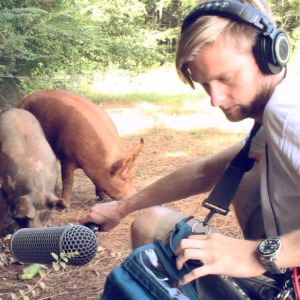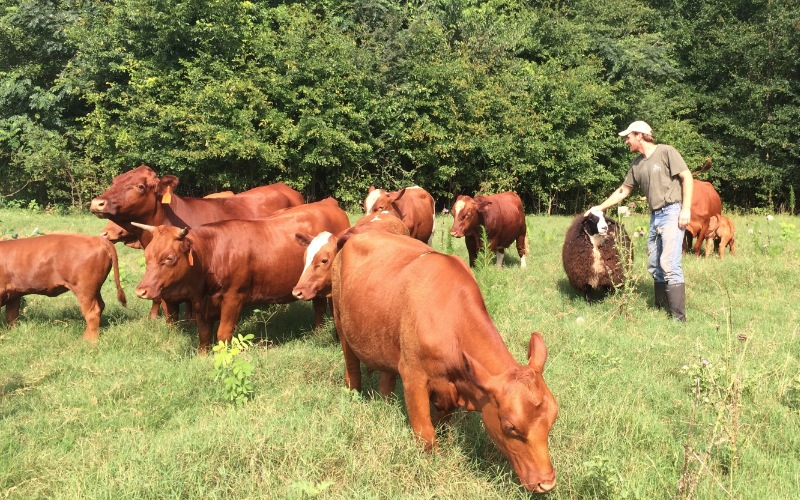Introduction
While on a calming walk, a car drives by me. As it zips by, some jerk in the passenger decides to scream at me as loud as they could. Being caught unaware, I jump. A feeling comes over me. The hair on the back of my neck stands up. I feel scared, concerned, and worried within a fraction of a second.
My roommate’s dog whines and cries as his master leaves the apartment. I can hear the sadness translate to my understanding. It’s a universal sound that says ‘Hey wait, don’t go!’ Through this sound, I can sense how much the dog cares for this person.
There are countless examples of vocalizations that make us feel something. There are emotive sounds that capture happiness, curiosity, sadness, pain, anger, fear and more… These sounds break the barriers of language and don’t need to have comprehensive words to understand their intent. As humans, we perceive emotive vocalizations in a deep-rooted, relatable way. These sounds are more felt than understood. They are visceral sounds that light up our brains in a profound way.
Within this article, I’d like to talk about what happens to us when we hear these vocalizations, talk about examples of emotive creatures in film that demonstrate expertly-done creature sound design, and give my own outlook on the significance and fun of creature sound design.
How We React to Vocalizations
We all have a reflex system built into us from birth. It’s a startle-response system that triggers upon an unexpected, loud, or jarring sound. This response can take us from an idle state to a state of high alertness within a fraction of a second. Centuries of predator & prey interactions have designed us to react in a fight-or-flight manner for our survival. That jerk-in-the-car’s scream caused my body to release certain chemicals inside my system, putting me into a temporary alert mode. It doesn’t feel great when you don’t expect it! But in film, it progresses the story and strategically steers the audience towards the sound designer and/or director’s intent.
A great example of a startle-response sound moment is the jarring picture cut into the ‘raptor feeding’ scene in Spielberg’s Jurassic Park. Dr. Alan Brand holds a supposedly vicious baby raptor is his hands as it coos sweetly & innocently. On the picture cut to the adult raptor cages, an absolutely terrifying blend of shrieks and squeals blare across the front and surround speakers. This puts the audience into a state of high alertness. As a result, the audience becomes cautious of the terrors living within the cages. (Which I believe is the exact goal of this scene!)
[soundcloud url=”https://api.soundcloud.com/tracks/215641646″ params=”color=ff5500&auto_play=false&hide_related=false&show_comments=true&show_user=true&show_reposts=false” width=”100%” height=”166″ iframe=”true” /]
Now, regarding how we react to happy and sad vocalizations is a trickier topic. But on a parallel note: scientists don’t have an answer to why minor key music sounds sad and major key music sounds happy. But their theory suggests that the accumulation of media that we have digested since birth has made us react in a specific way towards music and sound. For instance, hearing a minor key song at a funeral or hearing a happy song in a major key at a wedding or celebration are examples of experiences in life that imprint on our aural expectations.
I believe that this way of thinking translates to emotive vocals in film and in the natural world. We expect to hear ‘ouch!’ upon getting hurt, and a downward inflecting whimper when an animal is sad because we expect these as a learned audience.

Emotive Vocal Design
Within the creative universe that our profession lives and breathes, sound designers should be expected to give a voice to a plethora of bizarre beings. This includes robots, trolls, dragons, cyborgs, and any amalgamation of beings imaginable! Well- done vocal design needs to have a wide emotional range and should sound unique. It should sound outlandish to the average moviegoer, but very organic and natural at the same time.
Designers should utilize animal sounds sampled from our world, but arranged, layered, and meshed in a way that shapes the familiar, Earthly creatures we know and love into an otherworldly phenomenon no one has ever heard.
I’d like to talk about some excellent examples in film and how sound design breathed life into these characters.
Toothless from the How to Train Your Dragon franchise is a great example of creature sound design that must be carefully and painstakingly assembled. All in all, Toothless is an actor and the co-star of the films. The sound designers, teamed with the animation department, are the only entities giving this being its emotive presence and personality. Source recordings of animals along with sound designer Randy Thom’s voice attributed the emotional impact of Toothless’ vocalizations. This creature required such a genuine and dynamic emotive vocal range; I could only imagine the amount of work that went into it throughout the film!
Something important to note is that the designer must make vital decisions when editing: What is your character feeling? And how will you use your sounds to represent this? Knowing this will get you started on building your creature.
If Toothless needed to sound sad within a shot, then perhaps a sad horse whine augmented with a longing moan from a seal could represent this emotion. If Toothless needed to sound threatened, then something predatory like a big guttural roar from a wild cat could emphasize its distrust of the approaching protagonist, Hiccup.
In this audio example, listen to how Toothless confronts Hiccup, and how (s)he audibly transitions from an irritated predator to an adorable sounding puppy dog.
[soundcloud url=”https://api.soundcloud.com/tracks/215942387″ params=”color=ff5500&auto_play=false&hide_related=false&show_comments=true&show_user=true&show_reposts=false” width=”100%” height=”166″ iframe=”true” /]
These vocalizations happen within minutes of each other in the movie, once Toothless sees Hiccup as a friend and not an enemy. This kind of design is superb because it breathes life into Toothless, the audience feels what Toothless is feeling, and lastly (and very importantly!): it feels like the same creature throughout, regardless of how many different animal species were layered and processed!

R2-D2 from Star Wars has a wide range of emotions as well. For the most part, he was written in the script along with his counterpart C-3PO, who translates for R2. I don’t know what the franchise would be like without 3P0’s translations, but I believe it wouldn’t be difficult for the audience to understand R2’s intentions and feelings. While there are organic qualities, the digital boops & beeps have rhythm, timing, and certain inflections that enlighten the audience to R2’s emotional state.
What I’ve found is that R2’s vocalizations are incredibly human-like and relatable. R2 must have some top-of-the-line firmware that gives his speech software wonderfully human-like qualities! Listen to how vocal R2 is, as the Jawas unsuspectingly zap him:
[soundcloud url=”https://api.soundcloud.com/tracks/215479702″ params=”color=ff5500&auto_play=false&hide_related=false&show_comments=true&show_user=true&show_reposts=false” width=”100%” height=”166″ iframe=”true” /]
The initial zap has a blaring ‘Yow!!’ scream that cuts through the mix, while the fall has a succumbing, weak, creaky, ‘Ughh..’ component to it. There’s a rich analogue quality to these sounds that sound designer Ben Burtt melds well with his digital, ARP 2600 synth layer to encapsulate R2’s pain and fall. This scene is one to remember because of the emotional design of R2’s vocals in an iconic and relatable way.
Ending Thoughts
I’ve been mesmerized by creature sound design since I landed in sound and I’ve come to learn that it’s an incredibly challenging process that requires multitudes of revisions and iterations. But the end result is something so satisfying that I’ve felt compelled to get my thoughts out in this article!
What I find so fascinating about creature sound is that we’re able to utilize our voices and pets, various farm and zoo animals, as well as any sniff, chuff, roar or breath we can get our hands on to amass a library capable of giving life to any fictional being we are challenged to design!
And what’s more amazing is we are using samples of the real world. Maybe that one horse I recorded that vocalized a sad sounding whine was actually sad about something that happened that morning… Maybe she only got 1 sugar cube instead of 2? Who knows, but it’s going to make a great layer to a creature design! Call me crazy, but I think this is fascinating!
Sound designers have a unique duty in that we paint our canvas with materials that are sampled from our own beautiful planet. This idea has richness within it that other professions don’t. And utilizing a unique and unfamiliar animal sound layered with the precise emotional intent of our own voices can be a powerful toolset! (Don’t be embarrassed of sounding like a maniac as you yell into a microphone!)
I challenge everyone to think more about creature sound design and its use in story. Giving voice to a character is a stimulating and significant process…
If done well, your director will see the effectiveness and immersive potential of good film-sound!
Sources Cited:
• Jurassic Park. Steven Spielberg. Universal Pictures, 1993.
• How to Train Your Dragon. Chris Sanders & Dean DeBlois. Paranount Pictures, 2010.
• Star Wars. George Lucas. 20th Century Fox, 1977.
• ‘How To Train Your Dragon’ Sound Design Explains the Movie’s Roars’. NPR, 14 June. 2014. Web. <http://www.npr.org/2014/06/14/321952974/how-to-train-your- dragon-sounds>
• Dr. Vicky Williamson, Music Psychology Professor at Goldsmiths University <http://fusion.net/story/167773/science-explains-why-screams-make-us-cringe/>

Fantastic article! I never considered the role of empathy when creating a creature or robot. I wonder if anyone has studied that aspect in film of different cultures. I’ll bet vocalizations change their meaning depending on the culture (just like the impact of major vs minor music).
Nice perspective on this important topic, Jack! I think it takes compassion towards the animals to feel and then recreate the empathy you speak about in this article. I know you have that in spades, and it shows in your writing here…thanks for taking the time to add a dose of compassion and loving kindness to sound design!
Beau gets the credit for the article, not me! I just posted it up ;P
Ok, Beau – what I just said to Jack! I know Jack has a huge heart and is an animal rights supporter, so when I saw that he posted it, I assumed that he also wrote it…my apologies, and thanks again for the great info and insight!
Thanks guys, it’s a fascinating subject.. Emotional beings empathizing with emotional sounds! So cool!